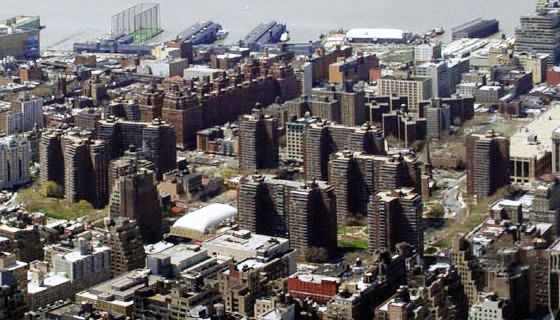Many have debated the origins and significance of housing—both public and private—in New York City. In general, housing is essential to daily life. Public housing has also become more prevalent in the city over the past few decades. Thus, it is more important to figure out what works and what does not, rather than debate the theory. Michael Kimmelman touched upon this issue in his article Towers of Dreams: One Ended in Nightmare by comparing two very similar housing projects and pointing out why one failed while the other succeeded.
Our past few classes have heavily centered around housing: Federal housing policies and the New Deal, a Museum exhibit about modern housing in New York City, Robert Moses and urban renewal. We have learned of public housing’s origins, its trials and tribulations, as well as the significance it plays today. After establishing this foundation of knowledge, I enjoyed reading Kimmelman’s article because provided an example of ‘good’ housing versus ‘bad’ housing.

Penn South Housing Cooperative
Kimmelman’s article compares two “aesthetic cousins,” Pruitt-Igoe (built in 1954) of St. Louis, Missouri and the Penn South (built in 1962) development in New York City’s Chelsea neighborhood. It was surprising to read that while both projects were almost identical, the Pruitt-Igoe development had seemingly gone so wrong. It became infamous for poverty, crime and segregation due to inadequate funds, deteriorating conditions and the 1949 Housing act, respectively. Tenants slowly abandoned the complex and it continued to deteriorate, falling prey to drug dealers and murderers until its demolition in the 1970s.

Pruitt-Igoe Complex
A major contrast to this, however, is the continued success of Penn South. Tax relief and stable income from maintenance payments and retail units provide money for improvements. Communal spaces, green areas, elevators and openness create a sense of community and “hominess.” This, I think, is the most important factor driving Penn South’s success: Tenants who feel safe in and connected to their place of living are more likely to take better care of it.
When reading the personal quotes Kimmelman placed in his article, I noticed a sense of attachment. Although Pruitt-Igoe so quickly and drastically deteriorated, original residents such as Sylvester Brown, Jacquelyn Williams, and Valerie Sills all had fond memories of their home. But since architecture itself was not at fault, what can we do in the future to prevent another Pruitt-Igoe? Perhaps it would be wise to reassess the purpose these housing units serve. Is it more beneficial to incorporate both low-income and market-rate units, should they be geared towards senior citizens as many NORCs suggest, or is there a better function these buildings can serve? There is no doubt that housing needs—especially in New York City—are shifting. We now have to learn how to best move forward when addressing these needs.
